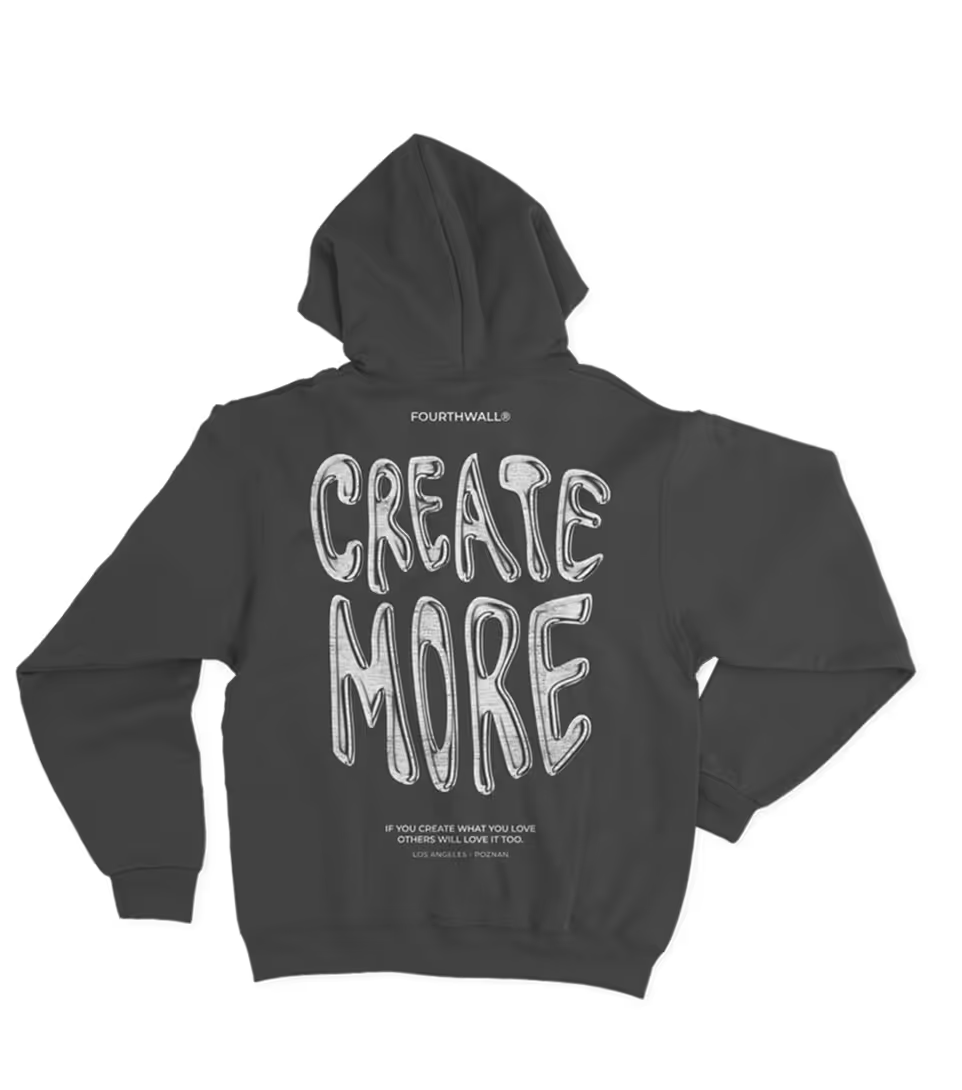12 Platforms Like Gumroad: Best Alternatives in 2025
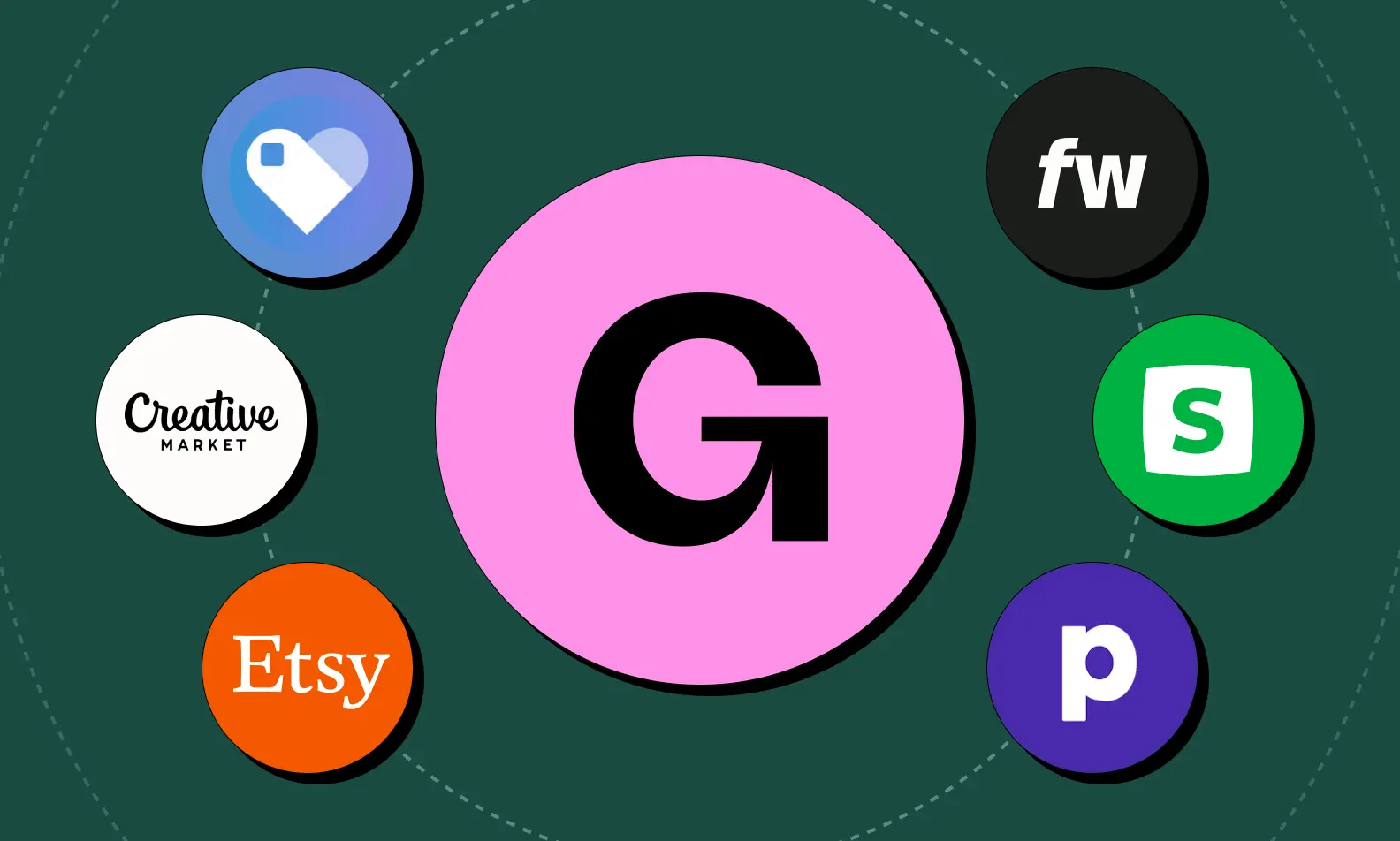
In the past decade, the rise of ecommerce platforms has opened up countless opportunities for creators and small businesses to monetize their skills and creativity.
Among the various platforms available, Gumroad has gained considerable popularity for its ease of use and ability to facilitate the sale of digital products online. However, as creators’ needs grow and evolve, many are searching for alternatives that offer more tailored features, lower fees, and enhanced capabilities.
In this article, we'll explore 12 platforms that serve as a better alternative to Gumroad, delving into each platform's unique offerings and advantages. Whether you’re an artist, educator, developer, or entrepreneur, our guide will help you find the ideal platform to grow your audience, increase revenue, and take control of your ecommerce experience.
What is Gumroad?

Launched in 2011, Gumroad is an ecommerce platform designed to make it easy for creators—such as artists, writers, musicians, and filmmakers—to sell digital products directly to their audience.
Known for its simplicity, Gumroad allows users to set up a customized online store within minutes without needing extensive technical skills. It handles all aspects of hosting, payment processing, and customer management, freeing creators to focus on their craft.
One of Gumroad’s standout features is its pricing model, which has no upfront subscription fees; instead, it takes a small commission from each sale, making it accessible for creators to start selling without significant initial costs.
The platform's ease of use, flexibility, and low-cost entry make it a popular choice for content creators seeking an affordable and efficient way to launch their ecommerce stores, connect with their audience, and retain control over their sales.
Why Are People Looking for a Gumroad Alternative?
While Gumroad is a convenient platform for selling digital products, there are several reasons why creators might look for alternative options. Here’s a deeper look into the primary drawbacks that drive users to explore other e-commerce solutions:
High Transaction Fees
Although Gumroad has a no-subscription model, it charges a flat 10% commission per sale, plus credit card fees. This structure can quickly erode profits, especially for creators selling lower-priced items, who may see significant portions of their earnings absorbed by fees. Previously, Gumroad’s commission rate decreased as sales grew, but with this recent change, creators now face a substantial fee on all sales, leading many to seek platforms with more favorable pricing.
Limited Customization Options
Gumroad’s simple design is easy to use but limits branding and customization for users looking to create a unique storefront. The platform offers only basic customization options, which can be restrictive for creators wanting a store that reflects their distinct brand identity. For those desiring more control over visual elements, page layout, or even customer experience, alternatives like Shopify or WooCommerce provide more flexibility and creative freedom.
Lack of Advanced Features
As creators expand their businesses, many find that Gumroad lacks essential features to support growth. The platform doesn’t support product upselling, bump offers, or advanced analytics—features that are crucial for many online businesses looking to optimize sales funnels. Additionally, Gumroad lacks built-in email marketing tools and robust customer relationship features, which are key for nurturing a loyal audience and driving repeat sales. Creators seeking these capabilities often find platforms like ConvertKit or SendOwl more appealing.
Scalability Limitations
Gumroad is ideal for creators selling a small number of products, but for those managing larger catalogs, it can quickly become challenging to organize and navigate. The platform’s limited ability to categorize products beyond tags makes it difficult for both creators and customers to find specific items easily. As a result, creators with growing inventories often look to platforms like Squarespace or BigCommerce that offer better inventory management and product categorization.
Inconsistent Customer Support
Many users have noted that Gumroad’s customer support can be slow or unresponsive, which can create significant setbacks if issues arise with orders or the platform itself. As an essential component of any e-commerce business, reliable customer support is crucial, and creators may prefer platforms with stronger reputations for support and troubleshooting assistance.
Weekly Payout Schedule
Unlike some ecommerce platforms that offer daily or instant payouts, Gumroad’s weekly payout model can delay access to earnings, which may inconvenience creators who rely on more frequent income. This factor can be particularly frustrating for those accustomed to platforms with faster payment options.
Security Concerns
While Gumroad provides basic security, it may lack the more robust safeguards offered by established ecommerce platforms, which are especially important for creators selling high-value digital goods. For those seeking enhanced data protection and fraud prevention, alternatives like Shopify and WooCommerce, known for stronger security infrastructure, may be a better fit.
Need to Sell Physical Products
Gumroad is designed with digital products in mind, offering limited functionality for selling physical items. Creators wanting to branch out into physical goods alongside digital products may find Gumroad’s capabilities insufficient. Platforms like Etsy, Shopify, and BigCommerce provide more comprehensive tools for managing and selling both physical and digital items.
Ultimately, while Gumroad remains a user-friendly choice for beginners, creators with growing businesses or specific needs may benefit from exploring platforms that offer more comprehensive features, lower fees, and greater customization.
12 Platform Alternatives to Gumroad in 2025
This section delves into the 12 best alternatives to Gumroad, providing a comprehensive overview of each platform. For each alternative, we’ll cover the following details: an overview, key features, pros and cons, and the ideal target audience for the platform.
1. Fourthwall

Fourthwall stands out as a top print-on-demand platform for creators looking to launch custom merchandise and branded stores with ease. Tailored specifically for creators and influencers, Fourthwall enables users to design, create, and sell unique physical and digital products---such as clothing, accessories, home goods, ebooks, music, software, and exclusive branded items—without needing to manage inventory or handle fulfillment logistics. With its seamless setup and intuitive interface, Fourthwall makes it easy for creators to monetize their audience by turning ideas into products quickly.
Pricing Plans: Fourthwall is free to join with no montly or annual costs. The platform only takes a 5% transaction fee off each membership and product purchase.
Key Features
- Custom Website Builder with No Coding: Fourthwall offers an intuitive website builder that allows creators to design a branded storefront from scratch—no coding required. This enables creators to establish a fully customizable website that aligns with their brand’s look and feel, making it easy to get a professional, polished online presence.
- No Upfront Inventory: Creators can list and sell products without needing to hold any stock. This print-on-demand model reduces financial risk and simplifies operations, as Fourthwall manages production only once a product is sold.
- Customizable Designs: Fourthwall empowers creators to design unique merchandise that reflects their brand identity, allowing them to deliver truly personalized products that connect with their audience.
- Streamlined Fulfillment: From production to shipping, Fourthwall handles every aspect of fulfillment, freeing creators to focus on their content and audience engagement without worrying about logistics.
- Membership Platform: Fourthwall’s built-in membership platform allows creators to establish tiered memberships and offer exclusive content or perks to subscribers, creating an additional revenue stream and fostering deeper fan engagement.
- Promo Codes for Marketing: Fourthwall enables creators to create and distribute promo codes, making it easy to run sales or promotions that attract new buyers and reward loyal fans.
- Custom Mobile Apps: Creators can develop personalized mobile apps for their storefront, giving fans a more immersive shopping experience directly from their devices and enhancing accessibility and brand connection.
- Seamless Integrations with Social Platforms: Fourthwall's shoppable features with platform's like, Instagram, Facebook, Twitch, and TikTok, allows creators to sell directly within their content for a seamless experience.
- Advanced Product Rendering: The platform provides photorealistic mockups of merchandise, which creators can use for professional-looking promotional content, elevating their brand’s presentation and appeal.
Pros:
- Simple, no-code setup for a customizable storefront.
- Seamless integration with major social platforms for effortless promotion.
- High-quality product rendering and mockup tools for professional visuals.
- Comprehensive analytics and performance insights to help optimize sales.
- Personalized mobile apps and global shipping, with fast fulfillment times.
Cons:
- Limited product variety in specific categories compared to dedicated ecommerce platforms.
2. Shopify
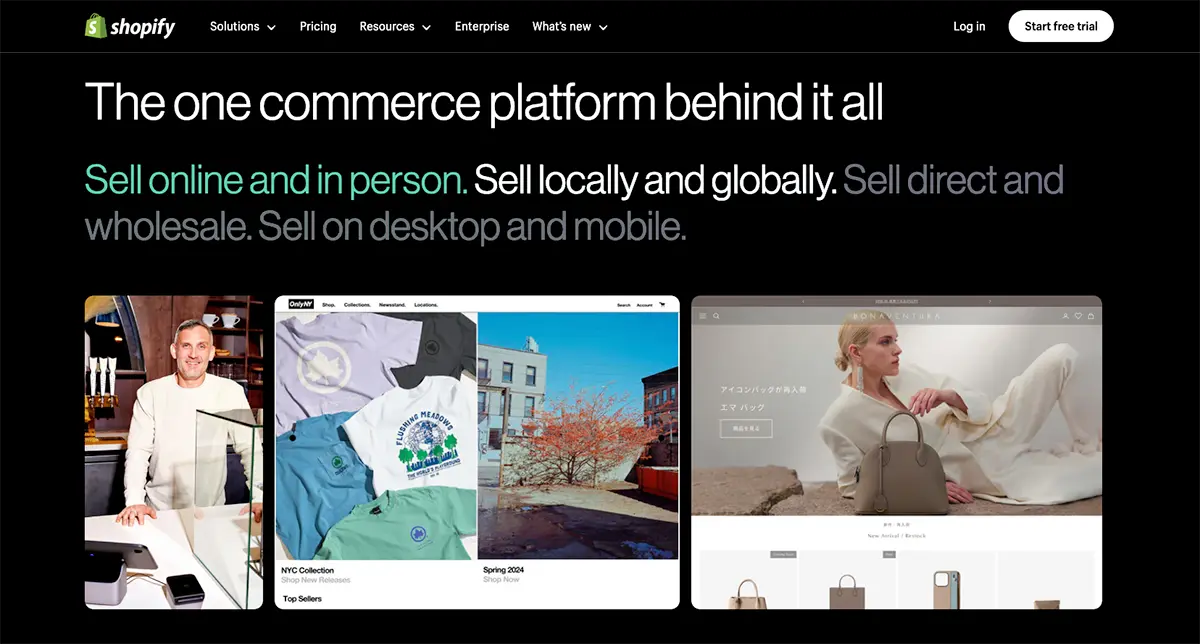
Shopify is one of the most popular and robust ecommerce platforms available today, offering a comprehensive solution for businesses of all sizes to sell products online. Known for its versatility, Shopify caters to both digital and physical product sellers, making it a go-to choice for brands looking for a scalable, customizable platform that can grow alongside their business. With Shopify, users can build a professional online store, integrate it with social media and online marketplaces, and expand through a vast ecosystem of apps.
Pricing Plans: Shopify's Basic Plan starts at $29/month, with higher plans ranging from $79-$2,300/month.
Key Features
- Extensive App Ecosystem: Shopify has a vast selection of over 3,000 third-party apps, allowing users to enhance their store with tools for marketing, inventory management, payment gateways, and more. This app marketplace enables businesses to tailor their store’s functionality to meet specific needs, whether for digital downloads, physical products, or subscription services.
- Customizable Storefront and Themes: Shopify’s drag-and-drop editor and range of professionally designed themes make it easy to create a visually appealing, fully branded online store without a web design background. Advanced customization options, including paid premium themes with dynamic effects, allow users to stand out in a competitive market.
- Multi-Channel Selling: Shopify enables seamless integration across multiple sales channels, allowing businesses to sell on their website, social media platforms, online marketplaces, and even in-person. This multi-channel approach helps brands maximize their reach and engagement with customers.
- Robust Analytics and Reporting: Shopify provides detailed analytics and reporting tools to help users understand their store’s performance, customer behavior, and product trends. This data-driven insight enables businesses to make informed decisions and optimize their marketing strategies.
- Wide Range of Payment Options: Shopify supports a variety of payment methods and currencies, helping brands sell to a global audience. For users of Shopify Payments, multi-currency selling is available, allowing international customers to see prices in their local currency.
- Built-in Blog and SEO Features: Shopify includes a built-in blog and a suite of SEO tools to help businesses attract organic traffic, engage customers, and improve their store’s visibility in search engines.
Pros:
- Fully customizable, with extensive app integrations for expanding functionality.
- Ideal for managing both physical and digital products.
- Multi-channel selling capability, with integrations across social media and marketplaces.
- Access to a marketplace of "Shopify Experts" for additional support.
Cons:
- Subscription fees range from $29 to $299 per month, and transaction fees apply unless using Shopify Payments.
- Advanced features often require additional paid apps, which can add up.
- Some users may find the initial setup and customization process has a learning curve.
3. Sellfy
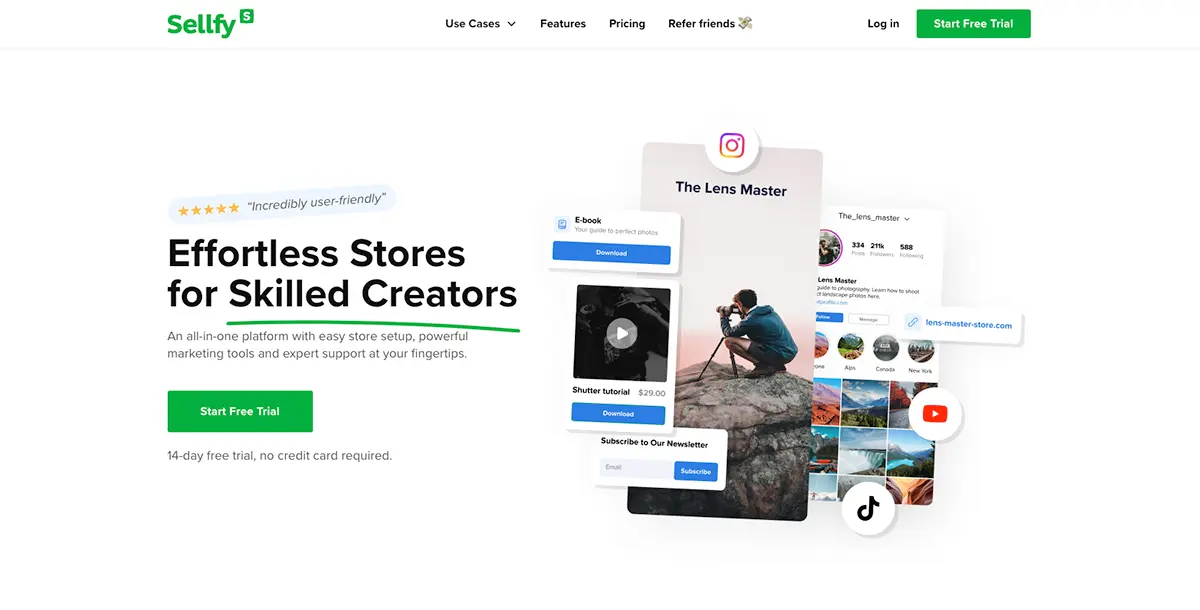
Sellfy is an ideal choice for creators, artists, and entrepreneurs who want a simple yet powerful platform to sell diverse product types, from digital downloads to physical goods. Its low fees, comprehensive marketing tools, and print-on-demand services make it a top option for those looking to grow their business without the added complexity or transaction costs of other platforms. With Sellfy, creators can build a complete e-commerce presence that supports their business and engages their audience efficiently.
Pricing Plans: Starter Plan starts at $22/month with higher plans going for $59-$119/month.
Key Features
- Effortless Setup: Sellfy’s user-friendly design makes it incredibly easy to launch a fully functional online store in minutes. Creators can start selling almost instantly by uploading products, choosing payment methods, and customizing their storefront.
- 100% Customizable Storefronts: Using the Store Customizer tool, creators can tailor their store’s appearance to reflect their brand, adding logos, adjusting colors, and designing a unique shopping experience without any coding skills.
- Built-in Print-on-Demand Services: Sellfy’s integrated print-on-demand feature allows creators to sell custom merchandise without managing inventory or fulfillment. Once a sale is made, Sellfy handles everything, from printing to shipping, ensuring a smooth experience for creators and customers alike.
- Comprehensive Marketing Tools: Sellfy includes built-in marketing features, such as discount codes, email marketing automation, and upselling options, to help creators attract new customers and maximize sales. Abandoned cart recovery and “pay-what-you-want” pricing further enhance customer engagement and conversion rates.
- Social Media Integration and Store Embedding: Creators can embed their Sellfy store into their own websites or promote products directly through social media channels, making it easy to drive traffic to their storefront.
- No Transaction Fees: Unlike Gumroad, Sellfy doesn’t take a commission from sales, so creators keep 100% of their revenue after paying the subscription fee. This cost structure makes Sellfy an attractive option for creators looking to maximize profit.
Pros:
- Simple, fast setup with no transaction fees.
- Supports digital, physical, print-on-demand, and subscription products.
- Robust built-in marketing tools, including discount codes, email automation, and cart recovery.
- Fully customizable storefront that can be embedded into other websites.
Cons:
- Limited integrations with third-party apps, which may restrict advanced functionality.
- Advanced features, like custom branding and cart recovery, are available only on higher-tier plans.
4. Podia
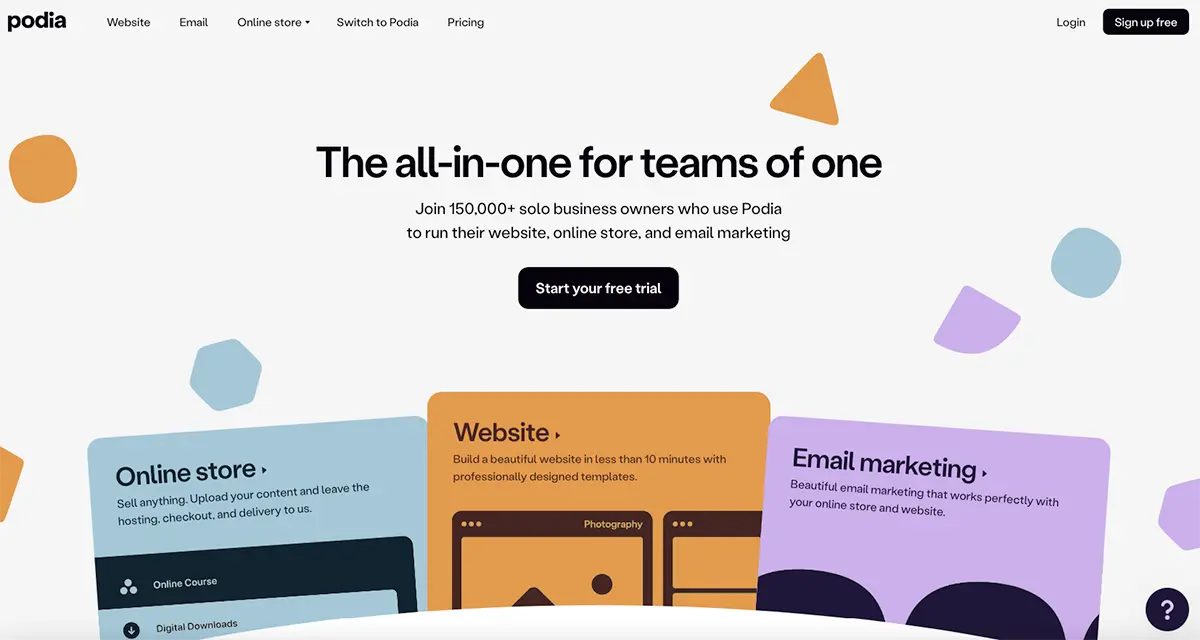
Podia is an excellent choice for educators, trainers, and creators looking to build an online learning community or monetize their knowledge through online courses. Its all-in-one design is particularly well-suited for those who want to manage courses, memberships, and digital downloads within a single, user-friendly platform. For creators looking to establish a comprehensive online teaching and sales platform, Podia’s combination of flexibility and functionality makes it a strong alternative to Gumroad.
Pricing Plans: Sign-up as a Podia Mover for just $33/month which includes a 5% transaction fee, or, become a Shaker for $75/month and no transaction fee.
Key Features
- Course Creation Suite: Podia offers a powerful set of tools for building and managing online courses, including features like quizzes, assignments, certificates, and drip content, which allow creators to release course materials gradually. This suite helps educators create engaging and structured learning experiences for their students.
- Membership Management: With Podia’s membership capabilities, creators can offer exclusive content to paying members and create a community around their brand. Tiered membership options enable creators to offer different content levels, such as bonus materials or VIP access, encouraging long-term engagement.
- Digital Downloads: Podia supports the sale of various digital products, from e-books and templates to software and webinars, allowing creators to diversify their revenue streams. Unlimited uploads mean users can sell as many products as they wish without storage constraints.
- Built-in Email Marketing Tools: Podia includes integrated email marketing features, enabling creators to build, segment, and automate email campaigns directly within the platform. This allows users to engage their audience, promote new products, and nurture relationships without needing external tools.
- Landing Page Builder: Podia’s landing page builder makes it easy for creators to design custom sales pages for each product or course, showcasing content in a way that aligns with their brand and drives conversions.
Pros:
- Comprehensive suite of tools for course creation, memberships, and digital sales, eliminating the need for multiple subscriptions.
- Intuitive email marketing features for audience engagement and product promotion.
- Unlimited uploads, allowing creators to expand their product library freely.
- User-friendly interface with no coding required, making it accessible for beginners.
Cons:
- Higher monthly fees than some competitors, which may impact creators just starting out.
- Basic built-in marketing features, which may prompt advanced users to seek external marketing tools.
- Limited support for physical product sales, making it less ideal for creators focusing solely on tangible items.
5. Etsy
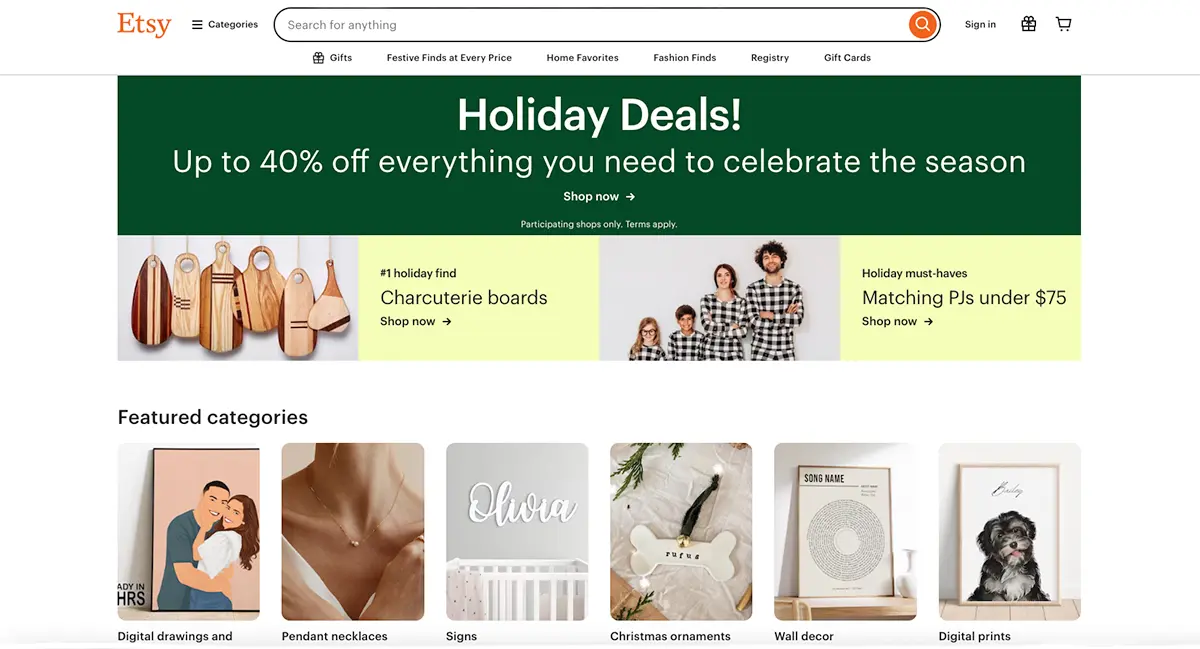
Etsy is ideal for artisans, crafters, and creators focused on selling handmade goods, vintage finds, unique items, or digital downloads who want instant access to a large audience. Its established customer base, supportive community, and marketplace structure make it a good choice for sellers looking for exposure without the complexities of running a fully-hosted store. While it lacks customization and charges fees, Etsy’s reach and focus on creativity make it a great alternative to Gumroad for creators prioritizing visibility and ease of setup.
Pricing Plans: Etsy has no subscription or annual costs but it does take a 5% transaction fee for every item sold and a $0.20 fee for every digital download listed in your store.
Key Features
- Large, Loyal Customer Base: Etsy attracts millions of visitors monthly, many of whom are specifically looking for unique, handmade, or vintage items. This built-in audience gives creators immediate visibility without needing to drive their own traffic.
- Easy Store Setup with Community Support: Setting up an Etsy store is simple, even for newcomers, with numerous tutorials and community support to guide sellers through the process of creating their first online store.
- Customizable Storefronts with Pattern by Etsy: While Etsy stores are limited in customization, sellers can add logos, banners, and branding elements. For more control, sellers can use Pattern by Etsy, a $15 monthly service that allows them to create a standalone storefront, similar to fully hosted e-commerce platforms.
- Robust Search Engine and SEO Tools: Etsy’s search algorithm and keyword optimization features help sellers increase visibility within the marketplace. With built-in search tools and advertising options, sellers can attract their target audience more effectively.
- Social Media Integrations and Advertising Options: Etsy provides several tools for promoting products, including integrations with social media platforms, Etsy Ads, and discounts or special offers, helping sellers extend their reach beyond the platform.
Pros:
- Access to one of the largest online marketplaces for independent sellers, with millions of monthly visitors.
- Immediate exposure and built-in traffic, eliminating the need to generate traffic from scratch.
- Strong community support, tutorials, and resources for new sellers.
- Marketing tools like SEO optimization, advertising, and promotions to boost product visibility.
Cons:
- Listing fees ($0.20 per item) and transaction fees (5%) that can accumulate, impacting profit margins.
- Limited control over storefront customization and branding options.
- Competitive marketplace, making it challenging for new sellers to stand out.
- Focus on physical and handmade items; services are not allowed, and digital items must fit Etsy’s product guidelines.
6. WooCommerce
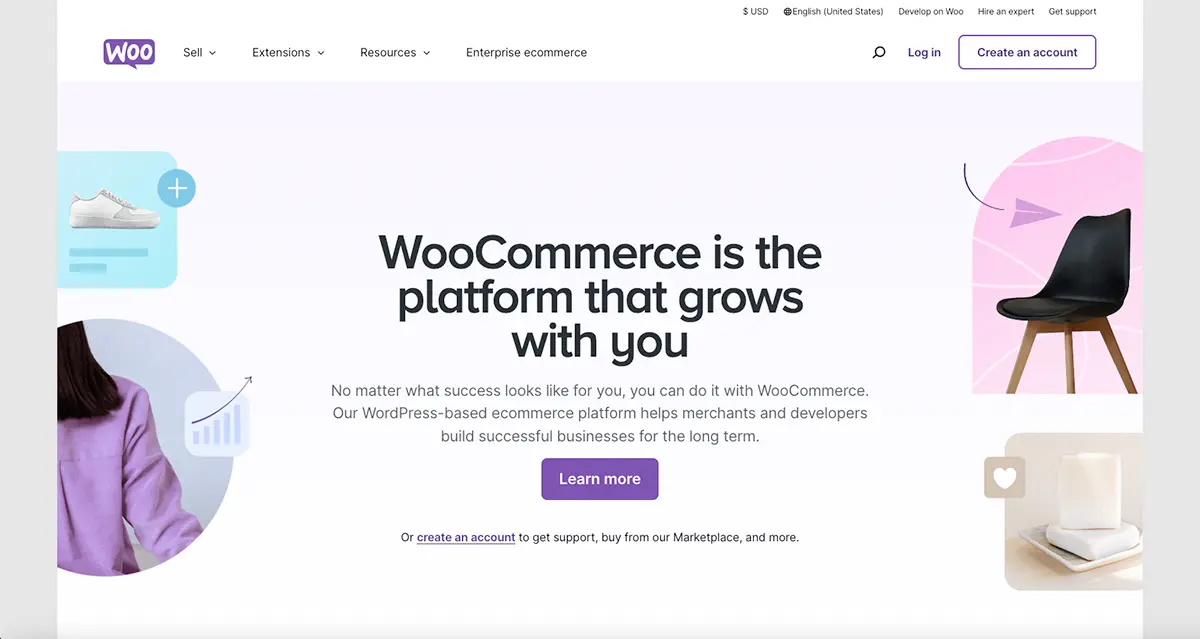
WooCommerce is a powerful ecommerce plugin that transforms any WordPress website into a fully functional online store. As an open-source platform, WooCommerce offers extensive flexibility and customization, making it an appealing choice for creators and businesses that want control over their store’s design, functionality, and user experience. Suitable for both digital and physical products, WooCommerce supports a range of e-commerce models, including subscription services, digital downloads, and traditional retail, allowing creators to build a versatile store that aligns with their brand and product offerings.
Pricing Plans: WooCommerce's Essentials Plan starts at $39/month, while it's Performance Plan goes for $70/month.
Key Features
- Open-Source Customization: As an open-source platform, WooCommerce allows for complete customization, giving users full control over their store’s appearance and functionality. It integrates seamlessly with WordPress themes and plugins, allowing sellers to create a highly personalized online shopping experience.
- Extensive Plugin and Theme Ecosystem: WooCommerce benefits from WordPress’s massive plugin library, offering add-ons for everything from payment gateways to advanced marketing tools. This flexibility allows sellers to enhance their store with features like cross-selling, upselling, discount codes, and cart recovery.
- Built-In SEO and Marketing Tools: With SEO-friendly tools and integration capabilities, WooCommerce makes it easy for sellers to attract organic traffic. Built-in features support search engine optimization, while third-party plugins enhance email marketing, social media sharing, and promotional campaigns.
- Multiple Product Types Supported: WooCommerce supports the sale of digital downloads, physical products, subscriptions, and even services. This flexibility makes it an excellent choice for creators selling various types of products.
- Mobile App Access: WooCommerce offers a mobile app for store management on the go, allowing sellers to track orders, manage inventory, and communicate with customers from their devices.
Pros:
- Open-source platform with unlimited customization options.
- Access to a vast ecosystem of WordPress plugins and themes for enhanced functionality.
- Strong SEO tools to help improve visibility and attract organic traffic.
- Supports multiple product types, including physical, digital, and subscription-based products.
- Allows for advanced marketing tactics, including upsells, cross-sells, and cart recovery.
Cons:
- Steeper learning curve; setup requires more technical know-how compared to plug-and-play platforms.
- Some premium themes and plugins may add to overall costs.
- Only compatible with WordPress, limiting its use outside of WordPress-based websites.
7. Teachable

Teachable is another popular ecommerce platform focused on helping creators monetize their expertise by offering online courses, coaching, and digital downloads. Known for its user-friendly setup, Teachable allows teachers, coaches, and creators to build, host, and sell unlimited courses without needing technical skills. With built-in email marketing and analytics, Teachable provides tools for audience engagement and course optimization, making it a strong alternative to Gumroad for those looking to sell knowledge-based content rather than physical products.
Pricing Plans: The platform's Basic Plans starts at $39/month with its Pro & Pro+ going for $119-$199/month.
Key Features
- Easy Course Creation and Hosting: Teachable provides a simple interface for building and hosting online courses, with support for multiple content types, including video, audio, text, and PDFs. Users can create professional-looking courses and start selling quickly.
- Drag-and-Drop Sales Page Builder: Teachable’s beginner-friendly page builder allows users to create customized sales pages for each course without any coding experience. Advanced users can use Teachable’s Power Editor for more customization by modifying the code.
- Built-In Email Marketing and Affiliate Tools: Teachable includes email marketing tools to help creators engage with their audience, promote courses, and run email campaigns. Additionally, it supports affiliate programs, allowing creators to reward affiliates who promote their courses.
- Flexible Pricing Options: Teachable offers various pricing models, including one-time payments, subscriptions, and payment plans, enabling creators to tailor pricing to their audience's needs. Bundling courses into packages or subscriptions is also supported for increased revenue opportunities.
- Robust Analytics and Reporting: Teachable provides engagement metrics and insights into course performance, helping creators refine their content, understand student preferences, and make data-driven improvements.
Pros:
- Beginner-friendly setup with an intuitive course and page builder.
- Supports various types of digital content and pricing models, including course bundles and subscriptions.
- Built-in email marketing tools, affiliate program support, and promotional options like coupons.
- No cap on the number of courses or students on paid plans, allowing creators to scale.
Cons:
- Transaction fees on free and lower-tier plans (up to $1 + 10% on the free plan and 5% on Basic plan transactions).
- Limited customization options for those seeking advanced branding without Power Editor.
- Lacks support for physical product sales and has limited integrations for advanced marketing.
8. Lemon Squeezy
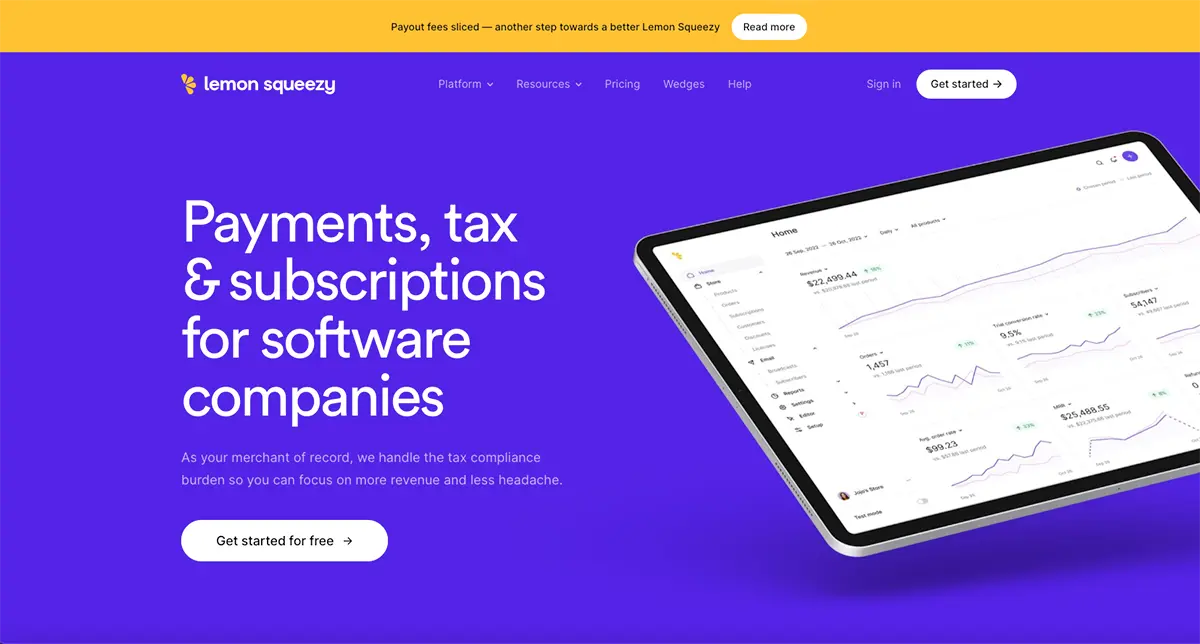
Lemon Squeezy is a specialized ecommerce platform designed for creators selling digital products, particularly software, SaaS products, and other downloadable content. With a focus on licensing, tax compliance, and international reach, Lemon Squeezy is ideal for global sellers who need to manage subscriptions, secure digital assets, and streamline sales. The platform acts as a merchant of record, handling all tax compliance and financial reporting, so creators can focus on growth without worrying about administrative details.
Pricing Plans: For ecommerce purposes, Lemon Squeezy only takes a cut of 5%+50 cents on all transaction fees.
Key Features
- License Key Generation at Checkout: Lemon Squeezy issues license keys upon purchase, making it perfect for software sellers who want to protect their products from unauthorized use.
- Global Payment and Payout Support: The platform supports over 15 payment methods and facilitates bank payouts in 79 countries. It also accepts payments in multiple currencies, enabling creators to sell to customers worldwide.
- Comprehensive Tax Compliance: Acting as a merchant of record, Lemon Squeezy manages all sales tax calculations, including EU VAT, and provides invoicing, relieving sellers of complex tax responsibilities.
- Built-In Marketing and Analytics Tools: Lemon Squeezy includes marketing tools such as email marketing for up to 500 subscribers, discount codes, and real-time analytics, offering insights into sales and customer engagement.
- WordPress Plugin and API Solutions: With a WordPress plugin and API capabilities, Lemon Squeezy integrates smoothly with existing websites, allowing creators to sell directly from their WordPress site or customize their setup as needed.
- Customizable Digital Storefront: Creators can set up their own branded digital storefront through Lemon Squeezy, providing a seamless and professional experience for customers.
Pros:
- License key issuance protects digital products from unauthorized access.
- Excellent choice for international sellers, with multi-currency support and bank payouts across 79 countries.
- Handles tax compliance and invoicing, reducing administrative workload for sellers.
- No monthly subscription fee, with a risk-free trial and no upfront costs.
- Offers marketing tools, including email marketing for up to 500 subscribers at no cost.
Cons:
- Transaction fees (5% + $0.50 per sale) may impact profit margins, particularly for lower-priced products.
- Limited to digital products; lacks support for physical items, which may restrict certain types of sellers.
- Payouts are made every two weeks, which may be slower than some creators prefer.
9. Payhip
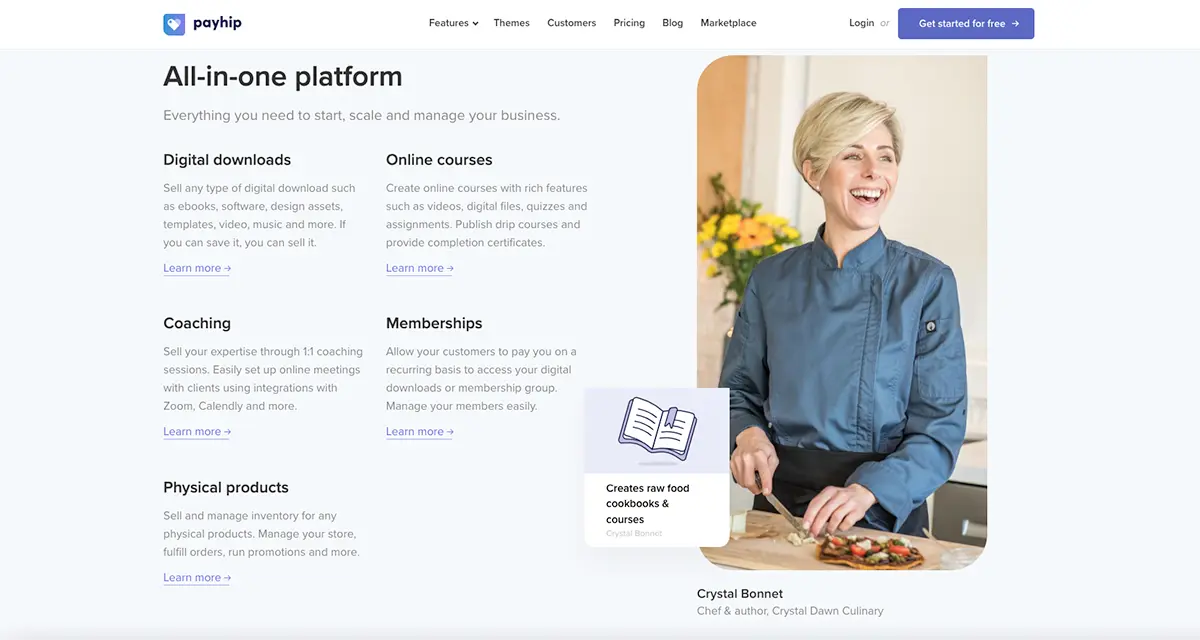
Payhip's user-friendly platform simplifies the process of selling digital downloads, subscriptions, and memberships online. Designed with independent creators in mind, Payhip offers essential tools for monetizing content without the need for technical expertise. Its straightforward setup, combined with features like customer management and affiliate marketing, make it a strong alternative to Gumroad for creators seeking a simple way to sell their digital products, memberships, or even physical goods.
Pricing Plans: Payhip's Basic Plan is free but does take a 5% free on all transactions.
Key Features
- Simple Payment Processing and Seamless Delivery: Payhip offers a streamlined checkout experience, ensuring quick, hassle-free transactions. It also automates the delivery process for digital products, providing instant download links after purchase for a smooth customer experience.
- Flexible Pricing Options: With support for one-time payments, subscriptions, and memberships, Payhip allows creators to choose pricing models that align with their business goals and product types.
- Affiliate Marketing Tools: Payhip enables creators to set up an affiliate program, allowing others to promote their products for a commission. This built-in feature can expand a creator’s reach and boost sales without needing third-party services.
- Comprehensive Customer Management: The platform offers tools for tracking customer data, managing orders, and issuing refunds, making it easy for creators to handle transactions and maintain positive customer relationships.
- Basic Customization with Branded Storefront: Although Payhip’s storefront design options are limited, it allows creators to brand their shop with a logo and custom colors. The platform can be embedded on existing websites or blogs, making it versatile for creators who already have an online presence.
Pros:
- Free to start, with accessible pricing tiers that reduce transaction fees on paid plans.
- Simple setup and intuitive interface make it ideal for beginners.
- Supports digital downloads, subscriptions, memberships, and basic physical products.
- Embedded store option allows creators to integrate Payhip directly with their existing websites.
- Built-in affiliate program to boost product promotion and expand reach.
Cons:
- Limited marketing tools and advanced sales features compared to more robust e-commerce platforms.
- Transaction fees on all plans except the highest tier, which can impact profitability.
- Basic storefront design customization, with fewer branding options than other platforms.
10. Ko-fi
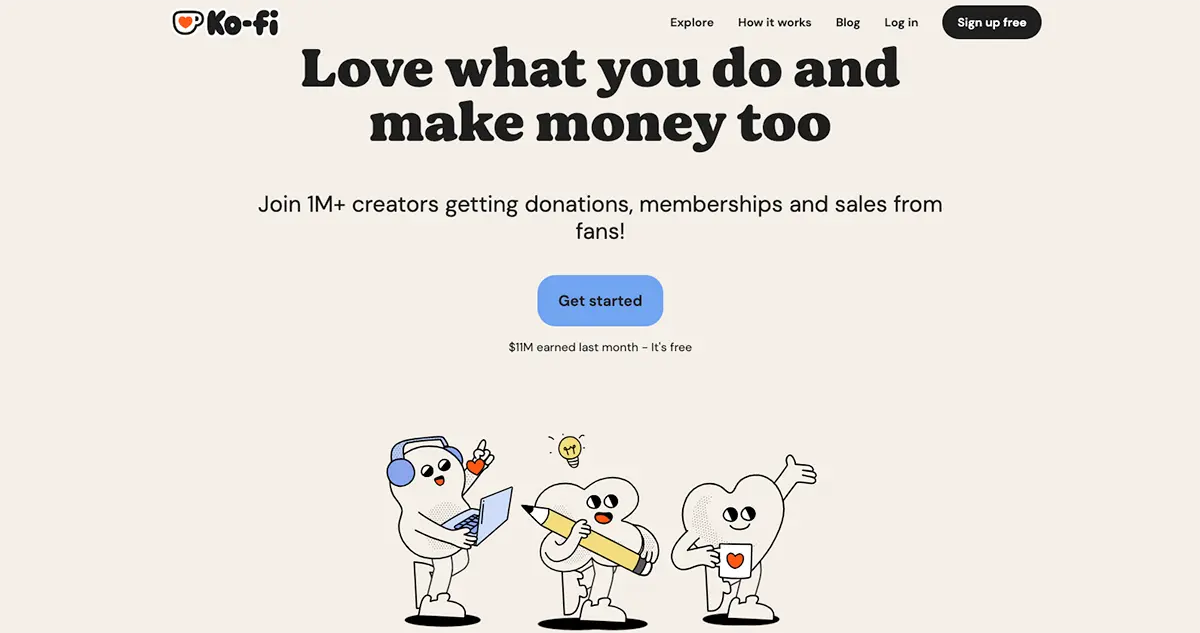
Ko-fi is a unique platform that serves as a virtual tip jar and online storefront, allowing creators to receive donations and sell digital or physical products directly to fans. Particularly popular among artists, writers, and independent creators, Ko-fi combines elements of crowdfunding with e-commerce to foster a close, supportive relationship between creators and their audience. With an easy setup and multiple ways to monetize, Ko-fi is a valuable Gumroad alternative for creators looking to engage their fans on a more personal level.
Pricing Plans: Ko-fi is free to use but like most platforms on this list, a 5% transaction fee is included on each product sold.
Key Features
- Flexible Donation Options: Ko-fi allows creators to receive one-time donations or set up recurring monthly memberships, enabling fans to support them in a way that suits their budget and level of commitment. Fans can “buy a coffee” for their favorite creators, making it feel like a casual, low-pressure form of support.
- Ko-fi Shop for Digital and Physical Product Sales: In addition to donations, Ko-fi provides a basic shop where creators can sell digital and physical products directly to their audience. While it lacks advanced e-commerce features, the shop setup is quick and easy, allowing creators to offer their work in multiple formats.
- Community Engagement and Updates: Ko-fi enables creators to engage with their supporters by posting updates, sharing content, and providing exclusive perks for fans who support them. This community-driven approach helps creators foster a loyal following.
- Simple Setup and Instant Payouts: Getting started on Ko-fi is incredibly straightforward. Creators can set up a profile, add a photo and bio, and connect a payment source like PayPal or Stripe in just a few minutes. Ko-fi also supports instant payouts, so creators can access their earnings immediately.
- Ko-fi Gold Plan for Advanced Features: For creators seeking more customization, the Ko-fi Gold plan ($6/month) offers additional perks, such as the ability to create membership tiers, provide exclusive content, and access premium features for enhanced monetization.
Pros:
- Free to use for donations, with 0% commission on contributions.
- Easy to set up and navigate, ideal for beginners and small creators.
- Multiple monetization options, including donations, product sales, and memberships.
- Strong community focus, encouraging fan interaction and support.
Cons:
- Limited ecommerce capabilities and customization options compared to dedicated online stores.
- 5% transaction fee on products sold through the Ko-fi Shop.
- Few built-in marketing tools and no mobile app for managing the store on the go.
- Basic storefront design, with limited options for branding and visual customization.
11. Paddle

Paddle is perfect for software developers, app creators, and SaaS businesses that need a comprehensive solution for managing digital sales, subscriptions, and tax compliance. Its built-in checkout and payment processing make it an attractive choice for businesses looking to streamline their backend operations and offer customers a seamless purchase experience. For creators selling digital-only products, Paddle’s global reach, flexible billing options, and simplified tax handling make it an efficient alternative to Gumroad.
Pricing Plans: There are no monthly costs for using Paddle. However, will be charged a flat 5% of the transaction amount + 50 cents per transaction.
Key Features
- Integrated Checkout and Overlaid Payment Options: Paddle provides customizable checkout pages that can be embedded directly into a website, allowing customers to purchase without leaving the page. The checkout can be tailored to match the brand’s look and feel, creating a seamless buying experience.
- Subscription and Recurring Billing Management: Paddle includes tools for managing subscriptions and recurring billing, making it particularly useful for SaaS companies and digital content providers who rely on long-term customer relationships.
- Global Payment Processing and Tax Compliance: Acting as a merchant of record, Paddle handles all tax compliance (including VAT and sales tax) across regions, allowing creators to sell worldwide without worrying about complex tax requirements.
- Advanced Analytics and Reporting: Paddle offers detailed insights and reporting features that help creators track customer behavior, monitor revenue, and optimize sales performance.
- Invoicing and Customer Management: Paddle’s built-in invoicing and customer management features simplify order processing and allow for efficient communication with customers, making it easy to track sales and maintain customer relationships.
Pros:
- Excellent solution for SaaS businesses and digital product sales, particularly for apps and software.
- Fully integrated checkout and payment solutions, simplifying global sales and tax compliance.
- Supports recurring billing and subscription management for long-term customer relationships.
- No monthly fees; only transaction fees (5% + 50 cents per transaction).
- Seamless checkout experience that doesn’t require customers to leave the website.
Cons:
- Lacks a customizable storefront option, limiting its use for businesses wanting a standalone e-commerce site.
- Limited marketing features, making it less ideal for creators focused on in-depth promotions and sales funnels.
- Limited customization options beyond the checkout page.
- Not suitable for selling physical products, focusing primarily on digital sales.
12. SendOwl
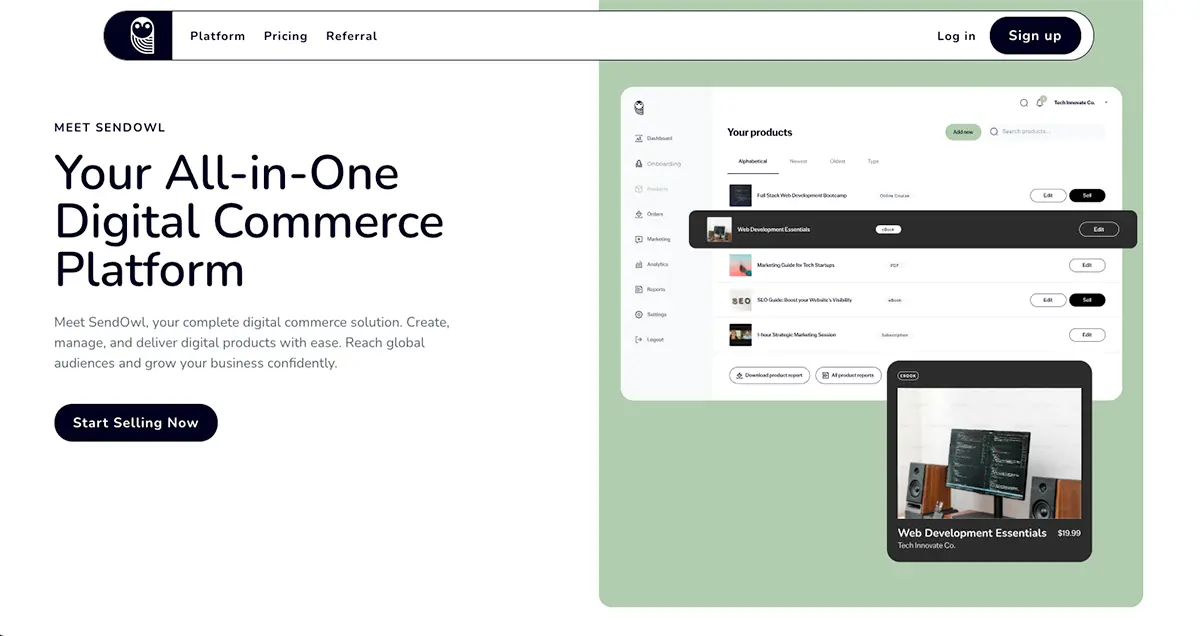
SendOwl is a great choice for digital creators—such as authors, musicians, and educators—who want an efficient and straightforward way to sell digital products and subscriptions directly from their websites or blogs. It’s especially suited for those who prioritize simplicity, rapid setup, and built-in affiliate marketing tools over complex storefronts and advanced marketing automation. For creators who need a reliable, low-maintenance sales solution, SendOwl is a compelling alternative to Gumroad, offering a range of practical e-commerce features to enhance the customer experience.
Pricing Plans: SendOwl offers three pricing plans; Standard, Self-hosted, and Subscription. Their Standard plan starts at $15/month.
Key Features
- Instant and Secure Delivery Options: SendOwl automates the digital delivery process, ensuring customers receive their purchases immediately via downloadable links or password-protected access. This feature enhances the customer experience and ensures secure product distribution.
- Customizable Checkout and “Buy Now” Buttons: SendOwl allows creators to create branded checkout pages that align with their visual style. With easy-to-embed “Buy Now” buttons, creators can integrate SendOwl directly into websites, social media, or blogs, creating a seamless buying experience for customers.
- Comprehensive Affiliate Management Tools: The platform includes built-in affiliate tools, enabling creators to set up and manage affiliate programs to expand their reach and sales potential through commissioned partners.
- Flexible Pricing Models: SendOwl supports a variety of pricing options, including one-time payments, subscriptions, and “pay-what-you-want” pricing, providing creators with the flexibility to structure product sales in a way that suits their audience.
- Marketing and Sales Tools: SendOwl offers essential marketing features such as discounts, cart abandonment recovery, upselling, and gift certificates. These tools help boost conversions and encourage repeat purchases, even without advanced marketing integrations.
Pros:
- Quick setup with an intuitive interface that’s easy for beginners.
- Versatile checkout integration allows seamless embedding on websites, blogs, or social media.
- Support for digital, physical, and subscription-based products, catering to a variety of creator needs.
- Affiliate management features allow creators to expand their reach with minimal effort.
- “Pay-what-you-want” pricing and customizable checkout for a branded, engaging customer experience.
Cons:
- No storefront option; SendOwl functions best as a back-office solution embedded into an existing website.
- Transaction fees on certain plans, which can impact profitability for high-volume sellers.
- Limited advanced customization and automation options, which may restrict creators looking for extensive branding control.
- No free plan; the lowest-priced Standard plan starts at $15/month.
Start Using Fourthwall Instead!
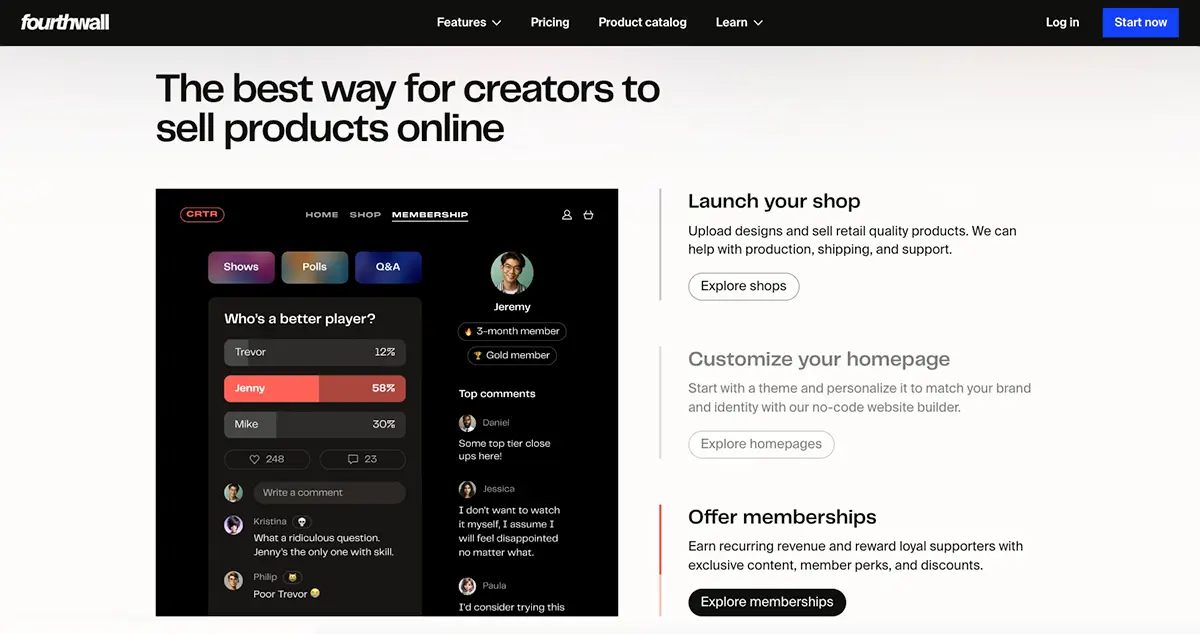
If you’re a creator looking for a platform that understands your unique needs, Fourthwall is the perfect solution for building and scaling your brand. Unlike Gumroad, Fourthwall offers a robust suite of features tailored for selling custom merchandise, with easy-to-use tools that allow you to design, preview, and launch products without worrying about inventory management or fulfillment logistics.
Fourthwall’s fully customizable storefronts let you build a branded shopping experience, while its seamless integrations with YouTube, TikTok, Instagram, and Twitch enable direct, shoppable connections with your audience. Plus, with Fourthwall’s high-quality printing, fast global shipping, and exclusive membership options, you can offer unique products and content to fans, keeping them engaged and enhancing their experience with your brand.
With Fourthwall, you gain more than a platform—you gain the flexibility to create a complete brand experience. Get started today and transform your creative vision into a sustainable, profitable business.
Frequently Asked Questions
Is Payhip Better Than Gumroad?
Payhip is often considered a better alternative to Gumroad for digital creators due to its user-friendly interface, flexible pricing, and added features like built-in affiliate marketing tools. Unlike Gumroad, Payhip’s pricing structure is simple and transparent, allowing creators to choose between a free plan with a 5% transaction fee or paid plans with reduced or no transaction fees.
This flexibility helps creators of all levels manage costs more effectively as they scale. Payhip also includes valuable e-commerce tools, such as the ability to sell digital downloads, subscriptions, and memberships, and integrates seamlessly into existing websites, providing creators with more control over their brand experience.
Although Gumroad offers similar digital sales features, many creators appreciate Payhip’s added marketing capabilities, like discount codes and affiliate programs, which make it easier to boost sales and expand their audience without relying on third-party integrations.
Do People Make Money on Gumroad?
Yes, many creators generate substantial income on Gumroad by selling digital downloads, subscriptions, memberships, and other digital products. The platform is particularly popular among independent creators, such as artists, writers, musicians, and educators, who can monetize their work without the complexities of setting up a full e-commerce site.
Gumroad’s simplicity makes it easy to list products, set prices, and start selling within minutes, while its tools for managing payments, providing instant digital delivery, and offering tiered memberships allow creators to engage their audiences and build recurring revenue streams.
Success stories on Gumroad highlight creators who have cultivated loyal fan bases, leveraging the platform’s reach and streamlined interface to make a steady income or even a full-time living by selling e-books, music, online courses, design assets, and other valuable content.
Can Anyone Sell on Gumroad?
Yes, Gumroad is accessible to anyone looking to sell digital or physical products, making it an inclusive platform for creators of all kinds, from artists and writers to educators and designers.
Setting up a storefront on Gumroad is straightforward, with minimal technical requirements, allowing users to start selling quickly without needing extensive e-commerce knowledge.
While it supports a wide range of product types—such as e-books, art prints, music, software, and even physical goods—sellers must ensure their offerings comply with Gumroad’s terms of service, which outline restrictions on prohibited content and product categories.
This openness makes Gumroad an appealing choice for those new to e-commerce, as well as seasoned creators looking to simplify their sales process while retaining creative control over their products and customer interactions.
How Much Does Gumroad Take Per Sale?
Gumroad charges creators 8.5% per sale plus an additional $0.30 payment processing fee, which applies to each transaction. This fee structure can be significant, especially for creators selling lower-priced items, as the flat fee portion makes up a larger percentage of smaller sales.
While Gumroad’s transaction fees help cover its infrastructure and enable features like instant digital delivery, creators with high-volume or high-ticket items may feel the impact on their profitability.
To help manage costs as their revenue grows, some creators choose to switch to Gumroad’s monthly Premium plan, which reduces the transaction fee to 3.5% plus $0.30 per sale, allowing for a more favorable rate as they scale their sales on the platform.
Which Is Better for Selling Online: Etsy or Gumroad?
The choice between Etsy and Gumroad largely comes down to the type of products and the audience you want to reach.
Etsy is a well-established marketplace ideal for selling handmade, vintage, and unique physical products to a broad customer base actively seeking artisan goods. Its search algorithms and marketplace traffic can help sellers reach buyers who are specifically looking for crafted items, making it a popular choice for artisans and craft makers.
Gumroad, on the other hand, is tailored for digital creators who want a straightforward way to sell digital downloads, subscriptions, and memberships directly to their audience. Unlike Etsy, which charges listing fees, Gumroad’s pricing structure centers on transaction fees, making it attractive for creators who plan to offer digital products or services without the need to manage inventory or shipping.
For creators focusing on digital content or virtual products, Gumroad provides a streamlined, no-frills approach, while Etsy remains the go-to platform for creators selling tangible goods and looking for marketplace exposure.

